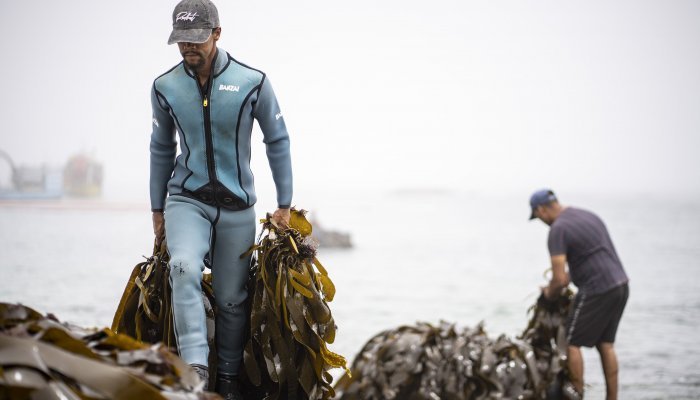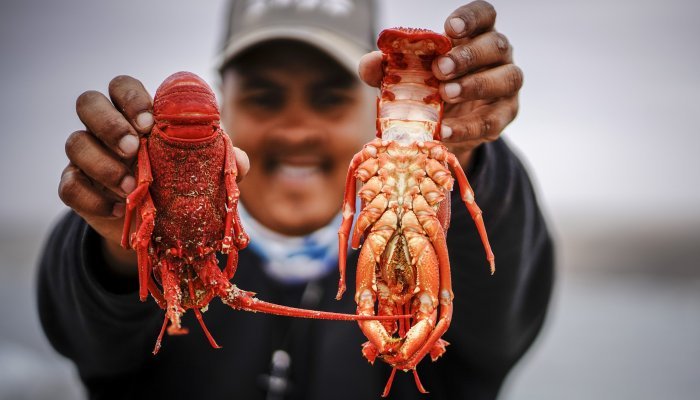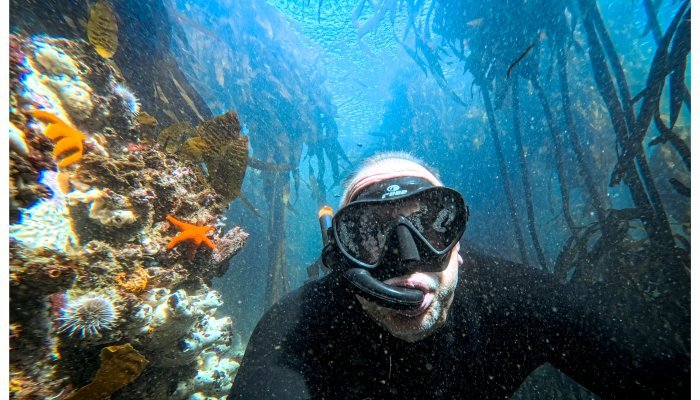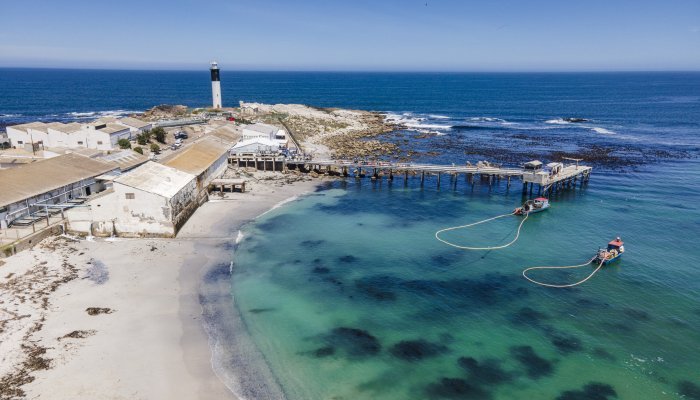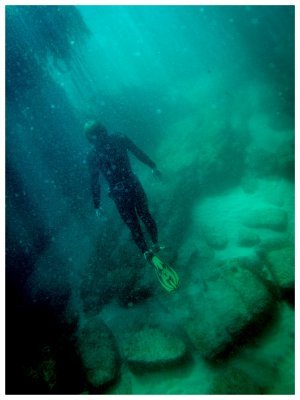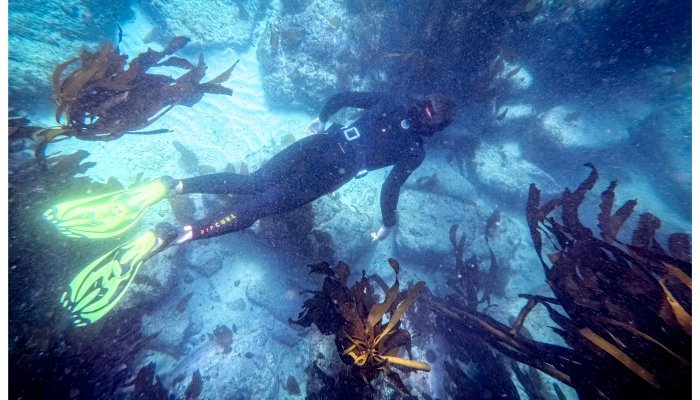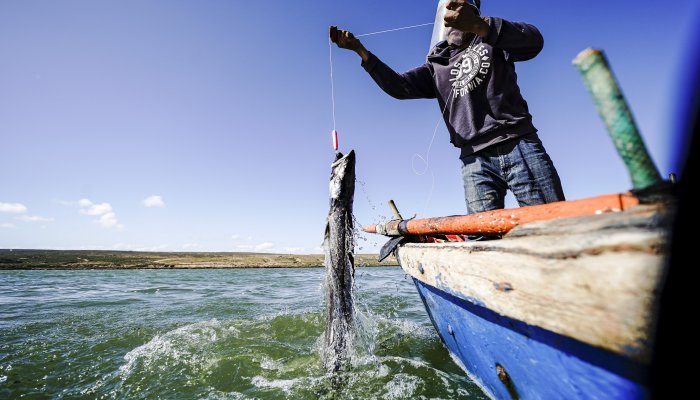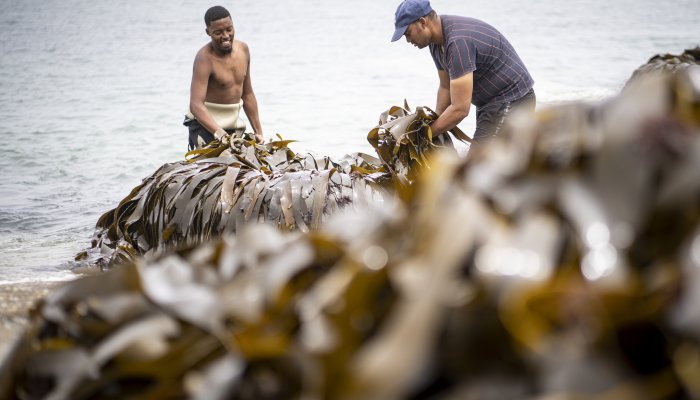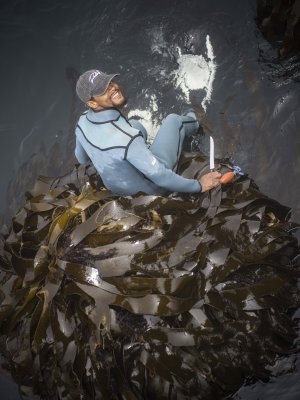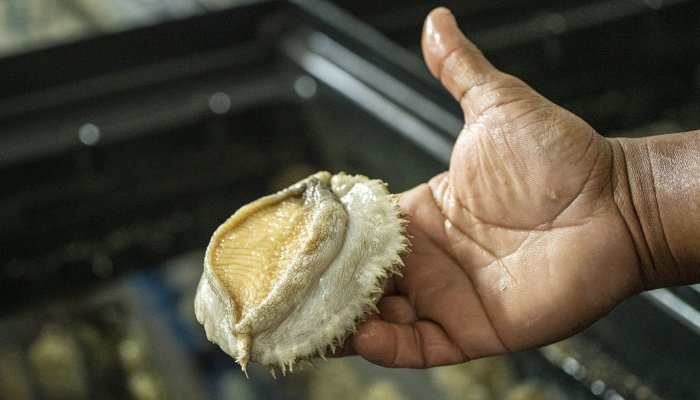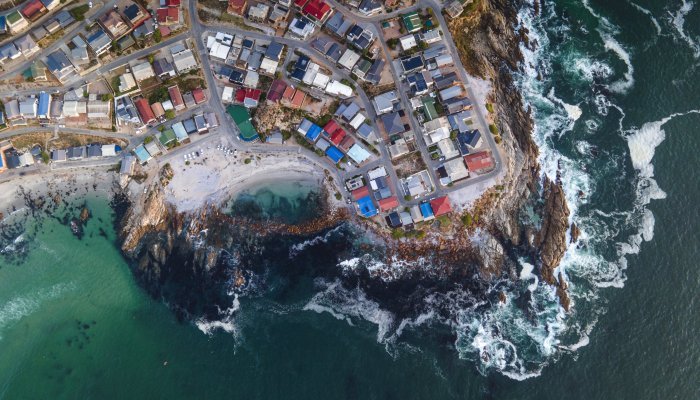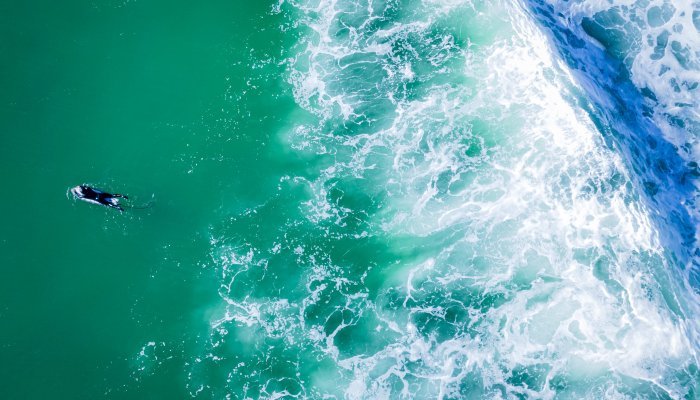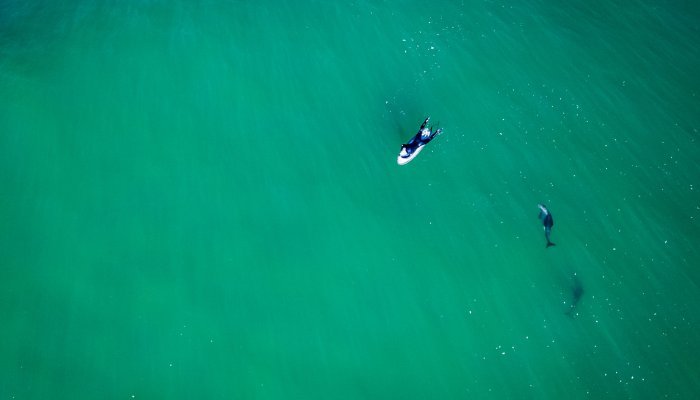The threat of climate change and global warming affects not only the world’s landmasses, but also the vast oceans covering 70% of planet Earth. There are ramifications for South Africa's kelp forests and the ocean-based industries that are dependent on this last wilderness.
Satellites have mapped 100% of the surface of Mars, a planet situated 225 million kilometres, on average, from Earth. (Their respective orbits around the sun place Earth and Mars anything from 54 million km to 401 million km from each other, depending on their individual trajectories.)
Yet our oceans cover more than two-thirds of Earth, but a mind-boggling 80% of the ocean floor has never been mapped. This means that humanity has never set eyes (or feet) on most of the surface of our tiny blue planet.
I had to fact-check this half a dozen times as it just did not seem right. I mean, here on the south-western tip of Africa, I’m constantly exploring the icy currents swirling along the wind-whipped Cape of Storms.
Secret bays and deserted beaches unfold along this daunting shore, shaping a world-renowned playground for surfers, kayakers, scuba divers and snorkellers addicted to the big blue. When you dip your head below the surface, an intoxicating universe unfolds, and you tend to think you know the ocean intimately.
You could not be more wrong. The areas we explore are generally along accessible shorelines, and what we see of this last wilderness constitutes a mere fraction of the seabed. However, it is a magnificent space to explore, with reefs, shallow ledges and sand banks jutting from terra firma, in the process creating the perfect environment for giant kelp forests to flourish.
Macroalgae rate as one of the planet’s most underestimated and undervalued ecosystems, and locally they are anchored within the bedrock on which southern Africa was built. They are marine behemoths and may reach lengths of up 70m while undulating on the ebb and flow of the tides.
When you enter this water wonderland, you transcend a barrier into a different and unfamiliar dimension, populated by alien arthropods and crustaceans and dinosaurs, some descended from megalodon giants. What really blows my mind every time I free-dive is the utter immensity of the kelp forests (and the fact that they extend way beyond my ocean backyard to cover at least 25% of the world’s shoreline).
According to the Two Oceans Aquarium, there are 30 main species of kelp in the world, and renowned naturalist Charles Darwin believed that they “support a richness of biodiversity that could rival that of Earth’s tropical rainforests”.
It’s not all good news, though: these critical habitats have started vanishing due to warming ocean currents, overharvesting, pollution and “destructive ocean mining practices”, according to Protect The Wild Coast.
It’s not at all surprising to find that the relative health of the SA and global ocean economy is directly linked to the health of these kelp forests. This may seem a bold assumption, until you consider that according to www.nature.com the worldwide swathes of seaweed are worth a staggering $500 billion per annum.
Our South African coastline is lined with kelp forests stretching more than 1 000km in total, with the two predominant species in our waters being Ecklonia maxima and Laminaria pallida, colloquially known as sea bamboo and split-fan kelp. Their enormous coverage alone underscores just how indispensable these underwater ecosystems are to general ocean health.
Scientists believe that kelp forests were formed during the Miocene period, anything between five and 23 million years ago. The larger seaweed species usually thrive in nutrient-rich waters where ocean temperatures range between 6 to 14°C, and where they achieve a remarkable growth rate of up to 60cm per day!
In South Africa, kelp especially flourishes along the icy shores of the Atlantic, where vast forests shape a safe and productive habitat for a multitude of marine flora and fauna. Research has proven that in areas where estuaries do not link to the ocean, the majority of fish, molluscs, crustaceans, and other marine organisms rely on the protection, food, and habitats created by kelp ecosystems.
Undersea powerhouses with a precarious future
There is a natural abundance of kelp, but there are several threats to its future. Global warming is, as expected, one of the key risks, with the consistent rise in ocean temperature damaging kelp forest growth.
The World Economic Forum has identified specific areas of concern, but ongoing research is required into the effects of water pollution, sedimentation, and temperature fluctuation. What we do know is that cold-water species are pushed beyond their physiological comfort zone in temperatures above 20° Celsius.
Implications for the natural biodiversity of our oceans – as well as economies linked to them – currently seem to be reaching a tipping point. Kelp is lauded as a plant with significant carbon-sequestering capabilities, and research may just position kelp as an effective organic solution to creating balance in a rapidly climate-changing environment.
Globally, kelp forests are recognised not only as areas of natural abundance and beauty, but as dynamic economic drivers with a production capacity equalling the Amazonian rainforests (Misra, 1979). South Africa may have seen slower on the uptake of this underrated marine resource, but this has changed markedly over the past two decades.
Kelp forests are integral to South Africa’s fishing industry, especially within lower income socio-economic communities along the West Coast. The industry contributes almost R4 billion per year to the national GDP (Blamey & Bolton, 2018), and at the bottom end of this ocean food chain, the first communities who suffer are those reliant on the trade in abalone, rock lobster, yellowtail, and other species flourishing amid these brown-green fronds.
Moreover, the kelp itself holds immense commercial value, and is widely utilised in anything from pharmaceuticals and fertilisers to biofuels, to name but a few. It is therefore self-evident that these ecosystems encompass huge economic value for South Africa.
However, the impact of rising ocean temperatures may soon exceed the tolerance range of these sensitive environments, and as such their future hangs in the balance. Studies have observed a gradual waning in kelp forests across the world, and unless a concerted effort is made to negate this decline, they may eventually disappear (Tennies & Alberto, 2023).
The domino effect
The decline in kelp forest coverage will undoubtedly affect fish stocks, as this will directly cause crucial nursery grounds and food sources to disappear. Commercially viable species may change their migratory and breeding patterns accordingly, with a knock-on effect where geographic ecological collapses could result (Pecl et al, 2017).
It stands to reason that this would cause a major decline in catch volume, affecting fishing communities, commercial fleets, seafood retailers, and ecotourism. In short, vanishing kelp beds will contribute to a decline in SA’s annual GDP and will be felt by enterprises and individuals across the nation.
The ripple effect will extend beyond direct beneficiaries from the ocean economy. Coastal kelp belts form natural protection against storm surges, which may now damage infrastructure in coastal communities; a decline in direct consumption will affect the hospitality and tourism industries; and recreational fishers and cultural destinations connected to ocean health are also sure to feel the pinch.
Feeling the heat
More than a million tonnes of kelp is harvested in the world every year, according to 2019 figures compiled by the United Nations Food and Agriculture Organisation. Chile is a major player in this market, supplying approximately 40% of the biomass to commercial partners in the food, cosmetics, textile, and biotech industries.
Marine heatwaves are, however, influencing production more and more, with entire kelp forests devastated along the Tasmanian and Californian coastlines in 2011 and 2014. Once these kelp beds disappeared, so did the rock lobster, abalone, and key fish species, forcing the shutdown of commercial fisheries worth millions of dollars.
Companies that have traditionally built their scope of operations on SA’s ocean resources face a stark choice: adapt or die a slow death. Marine businesses will have to diversify their catch, while also implementing sustainable practices and exploring alternative income sources.
The aqua-culture and biofuel sectors are booming, while SMME tourism operators should shift their focus to include foraging and culinary experiences. Through promoting alternative marine experiences and responsible ecotourism practices, companies such as Re-Wild offer small-group experiences where participants do traceable, organic, and low-impact harvesting, before creating a sumptuous and sustainable culinary feast with kelp as one of the main ingredients.
Good news (according to the World Economic Foum) is that science is finding ways to restore kelp. Unfortunately, these newly discovered methodologies will need to be upscaled significantly — and fast — in order to reverse the massive losses occurring in coastal regions around the world. Future-proofing endangered kelp species through natural bio-engineering processes will also enable them to withstand higher temperatures.
Policy changes at national or regional levels could also help mitigate unsustainable harvesting of kelp, while watchdogs such as Protect the West Coast in South Africa will help curb coastal mining, rogue developments, and unchecked pollution. (Too many African — and international — governments seem to be turning a blind eye to these illegal operations.)
Together, we could turn the tide and write a new chapter for our oceans. This narrative could hopefully see global warming cooling down, kelp forests thriving, fish stocks rebounding, and marine businesses adopting sustainable operations. After all, the ocean’s health is intricately linked to that of humanity, and protecting it is a shared responsibility.
Ten tips to safeguard ocean health
- Sustainable fishing practices: Implement quotas, gear restrictions, and closed seasons to protect vulnerable species and allow fish populations to recover.
- Combat illegal fishing: Support initiatives to curb illegal, unreported, and unregulated (IUU) fishing, protecting resources and ensuring fair competition.
- Habitat protection: Advocate for and participate in marine protected areas, creating sanctuaries for kelp forests and fostering biodiversity.
- Reduce pollution: Advocate for stricter regulations and implement practices that minimise ocean pollution from land-based sources and plastic waste.
- Support sustainable seafood: Choose Marine Stewardship Council (MSC) certified seafood, ensuring environmentally responsible fishing practices.
- Spread awareness: Educate yourself and others about the threats to our oceans and promote responsible ocean stewardship.
- Reduce your carbon footprint: Lower your individual carbon emissions to mitigate climate change and its impact on the ocean.
- Support ocean research: Contribute to organisations researching ocean health, kelp restoration, and climate change adaptation strategies.
- Choose eco-friendly businesses: Support companies committed to sustainable practices and responsible resource management.
- Get involved: Engage with policymakers, participate in beach clean-ups, and advocate for ocean conservation initiatives.


